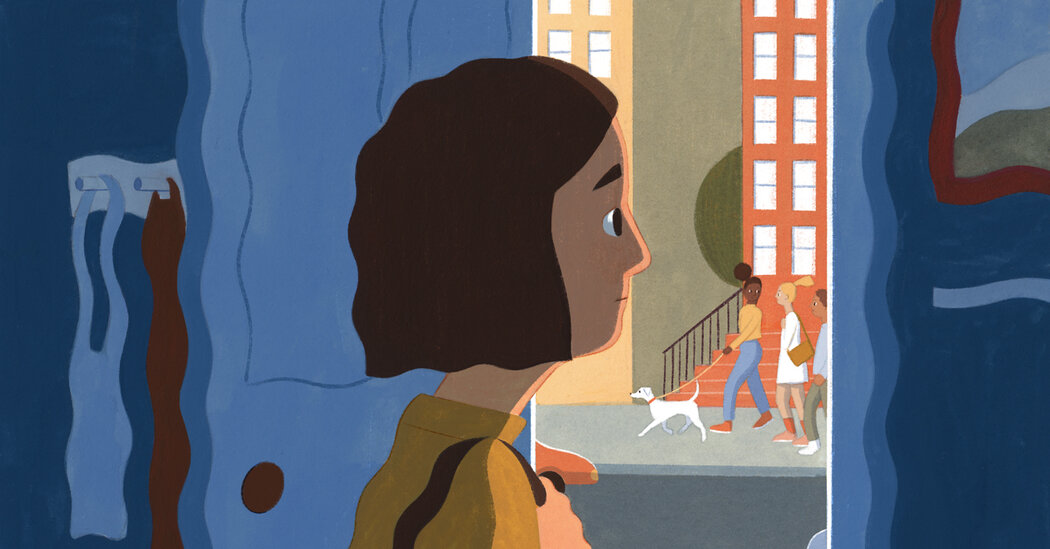After a year of virtual gathering, getting back to real-life relationships can be intimidating. These eight simple exercises can help.As we move through the spring of The Great Vaccination, many of us are feeling cautious optimism, and also its flip side: creeping dread.Maybe you have a sense of ambivalence about how to interact with others again. If you used to work in an office, you might be worried about returning to work — but eager to see people again. Or you find yourself having to confront a neighbor about a longstanding problem — but you’re out of practice with conflict resolution. (I’m not sure I remember how to talk to another human anymore, let alone one I disagree with.)Whatever the specifics, “there will be new forms of social anxiety, said Dacher Keltner, a professor of psychology and the director of the Social Interaction Lab at the University of California, Berkeley.“People are really anxious about being out in restaurants with friends, or about dancing with a big sweaty group of people — or even about sharing a yoga mat,” he said. “It’s always good to remember individual differences — there’s a lot of variability. But there will be a lasting societal legacy around intimacy, the noise that comes with returning to school, the complexity of the playground and of work.”Dr. Keltner has studied human behavior and the biological and evolutionary underpinnings of emotions for decades, with a focus on “pro-social” states — behavior that strengthens connections between individuals — that are especially good for society.“We’re hyper-social mammals — it’s our most signature strength,” said Dr. Keltner, a co-founder of the Greater Good Science Center who was also a scientific consultant on emotions for the Pixar film “Inside Out.” “It’s what sets us apart from other primates: We help, we laugh, we collaborate, we assist.”Lately, we’ve been living our lives siloed away online, missing many of the essential face-to-face experiences that are key to human interaction. It’s notable that Dr. Vivek Murthy, the newly reappointed U.S. Surgeon General, has talked not only about the physical and economic toll of the pandemic, but also of “the social recession.”Before Covid, this kind of post-isolation anxiety was most often suffered by people who re-enter the civilian world after prison, wartime deployment, humanitarian aid work or remote expeditions. The challenge now is that so many more of us will be experiencing some aspect of this all at once, and coming back to social situations with others who likely have their own fears too. It is stalled social development, on a societal level.Debra Kaysen, a clinical psychologist and a professor of psychiatry and behavioral sciences at Stanford University, said that coming back to so-called “civilian life” can be disorienting, surreal and difficult — and not just for combat veterans. Her clinical and research work focuses on anxiety disorders and trauma, and she has worked on developing coping strategies for health care workers dealing with mental health concerns during the pandemic.Now, everyone is trying to navigate conflicting threat levels in a way that used to be specific to those populations, she said. Cues that used to be neutral or positive, like being around other people (I love my friends and family!) are now associated with threat (my friends and family might infect me with Covid!). And we are confronting the challenge of how to turn off that alarm. “What’s a true alarm and what’s a false alarm has gotten more confusing for all of us,” Dr. Kaysen said.So how do we relearn how to be together?Give yourself permission to set small, achievable goals. And accept that other people are going to have different responses than you — the friend or family member who wants to eat inside the restaurant when you don’t, for example, or who is ready to get on a plane and take a vacation.Accept that certain activities may feel tough for awhile. Driving an hour to a meeting. Flying a red-eye to a conference. Attending a family reunion, say, or four pandemic-postponed weddings in one month.All of this can prompt you to ask, of your family or your boss or even yourself: “Is it really worth the time?” and “Now that I know things can be different, do I want to go back to my old life?”Recovering doesn’t mean you go back to the way you were before, Dr. Kaysen said, using kintsugi, the Japanese technique of repairing broken pottery with gold, as an analogy for coming out of hard times with awareness of the change, and stronger than before. “It’s that you create a new normal, one that’s functional and beautiful — and different.”Dr. Keltner agreed that we may need to “re-educate ourselves” — “like, how do we hug again?” Your timing might be off for a hug, or a joke or even a compliment. “How do you look someone in the eye so that it’s not intrusive? How do you compliment someone? You might not have done it for a year.”Rather than be overwhelmed by everything at once — for example, going to a party where you have to adjust to greeting acquaintances, eating with others and attempting to make small talk — all at the same time — why not take things step by step? This moment can be an opportunity.8 Exercises to Strengthen Your Social MusclesHere are eight small, science-based exercises Dr. Keltner recommends to help ease back into your community. Go at your own pace.Share food with someone.Eating a meal together boosts mood and is a potent antidote for loneliness — aiming for in-person interaction around the ritual of eating is a great goal, even if you don’t meet it every single day. An outdoor picnic or a distanced backyard happy hour is a great and safe option for reconnecting with friends and family.Tell someone a joke in person.You may be out of practice and have to work on your timing. But making eye contact and laughing together is essential to feeling connected to someone else — even if the joke falls flat, being silly together will feel really good.Ask someone what they’re listening to or reading right now.Music and literature can be a community-building gift. Listen to music together; exchange books and have an in-person discussion afterward. This is a social exercise, but also one that will give you a much-needed hit of novelty along with the insight.Reach out to someone you’ve lost touch with.Make a phone call, send a meaningful text, write an email. It’s time to start rebuilding the larger social infrastructure outside our immediate circles.Strike up a conversation with a stranger.Pick someone with whom you have passing contact: a fellow dog-walker, the cashier at a grocery store, a delivery person on your doorstep. Make eye contact; talk to each of them as a person rather than as a function. It’s so easy to ignore the human behind a mask. Make the effort to ask something outside the normal transaction — what’s changed since the last time you saw each other, what they’re looking forward to.Move with someone.Dance, walk, run, swim, bike — or even do the dishes and fold the laundry together. Physical synchronicity is one of the most important ways we have to connect with someone else.Sit quietly with someone …and remember how to comfortably be, without talking, in companionable silence, with someone else. Let the other person know it’s OK to not always fill the air. Nonverbal communication is important to practice — and it’s a way to deepen your relationship.Make a date for the future.Think of something fun to do with someone you love — it could be a summer beach weekend, or maybe a ski trip next winter. Having something to look forward to is essential for well-being. Practice optimism, in anticipation of normalcy. Plan with hope.Bonnie Tsui’s books include “Why We Swim” and “The Uncertain Sea.”
Read more →




